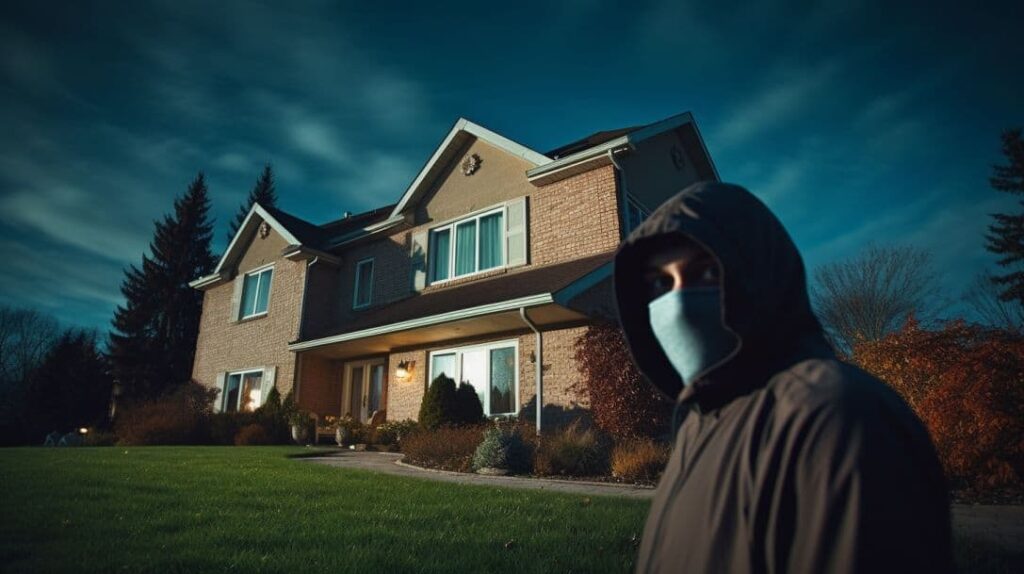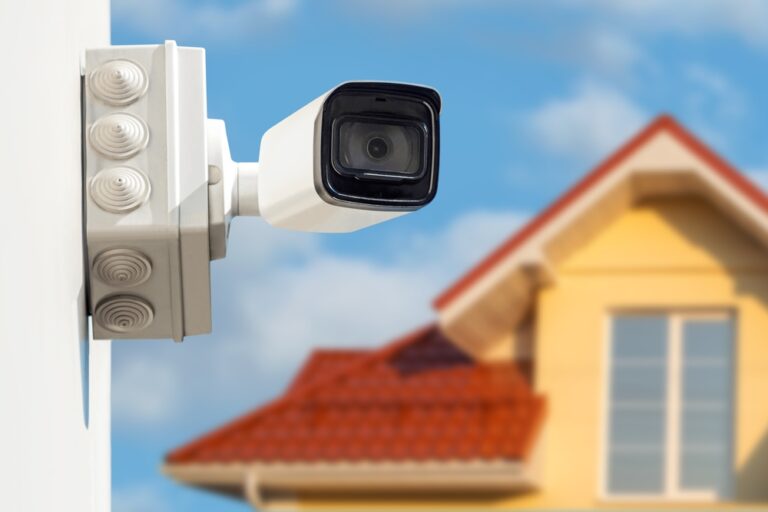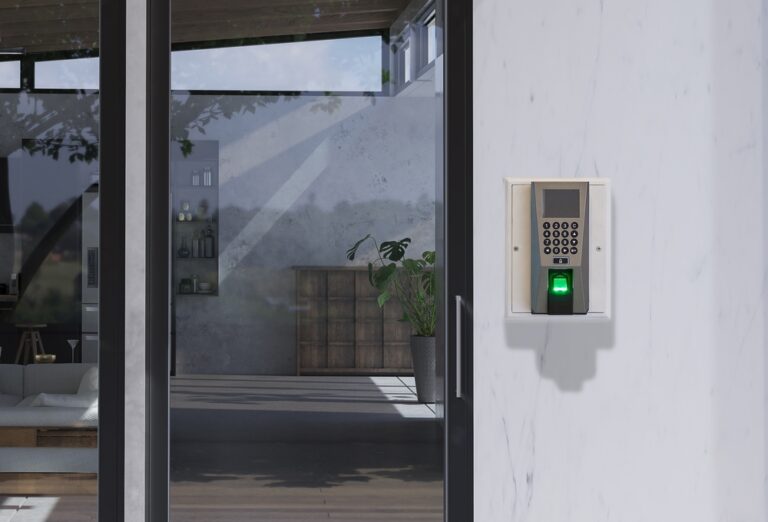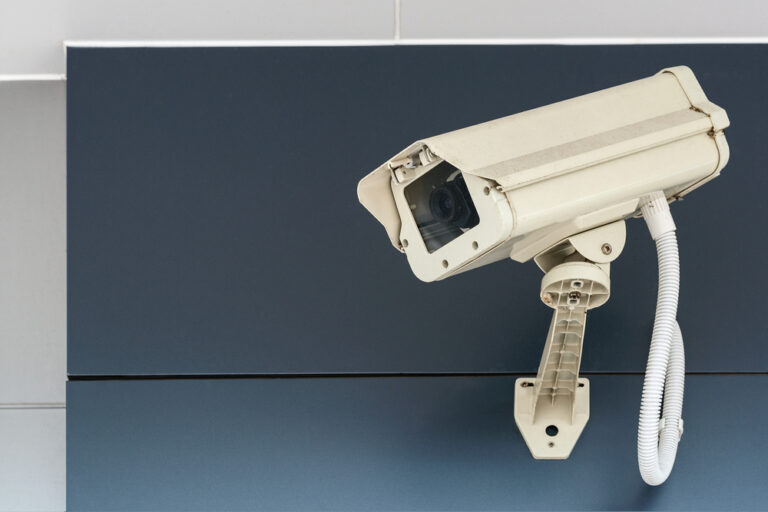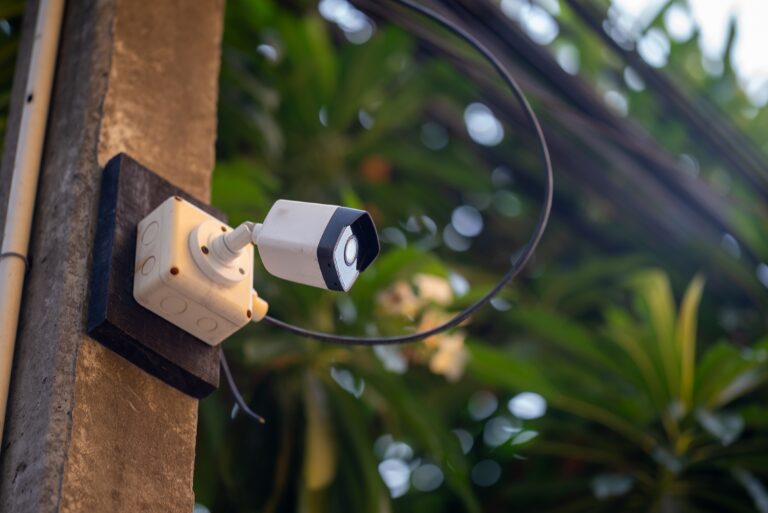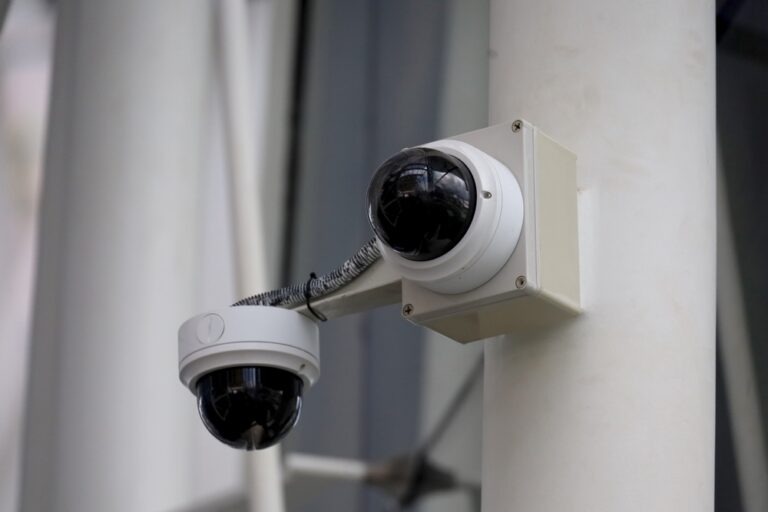- 1) Key Takeaways
- 2) Understanding the Effectiveness of Security Cameras in Crime Prevention
- 3) Studies Showing the Positive Impact of Security Cameras in Deterrence of Crime
- 4) Factors That Influence the Effectiveness of Security Cameras
- 5) Controversies Surrounding the Use of Security Cameras
- 6) The Role of Artificial Intelligence in Enhancing the Effectiveness of Security Cameras
- 7) Real-Life Examples of Security Cameras Detering Crime
- 8) Limitations and Criticisms of Studies on Security Camera Deterrence of Crime
- 9) Balancing Privacy and Security: Best Practices for Using Security Cameras
- 10) Conclusion: Security Cameras a Powerful Piece in the Crime Prevention Puzzle
- 11) FAQs
Do you ever wonder if that security camera hanging on your front porch makes a difference? Interestingly, studies have shown that security cameras can indeed deter crime. This blog is about to pull back the curtain on those research findings, revealing how and why surveillance systems are effective measures against criminal behavior.
Ready for a deep dive into the world of CCTV and crime prevention?
Key Takeaways
- Security cameras help stop crime. They make criminals worried about getting caught on video.
- Studies show security cameras cut down property crimes by around 20%. This happens because burglars don’t want to get caught on camera.
- Clear, good-quality video from your security camera makes it easier for police to catch bad guys if a crime does happen.
- Where you put your camera is important. It needs to be visible but also placed well so it can see any criminal activity.
- Keeping the cameras in good working order makes them more effective against crime.
- There are arguments over privacy with security cameras, as they might record things people want to keep private. So, users need to use them responsibly.
- Artificial Intelligence (AI) adds extra features like spotting suspicious movements and recognizing faces which helps in preventing crimes better.
Understanding the Effectiveness of Security Cameras in Crime Prevention
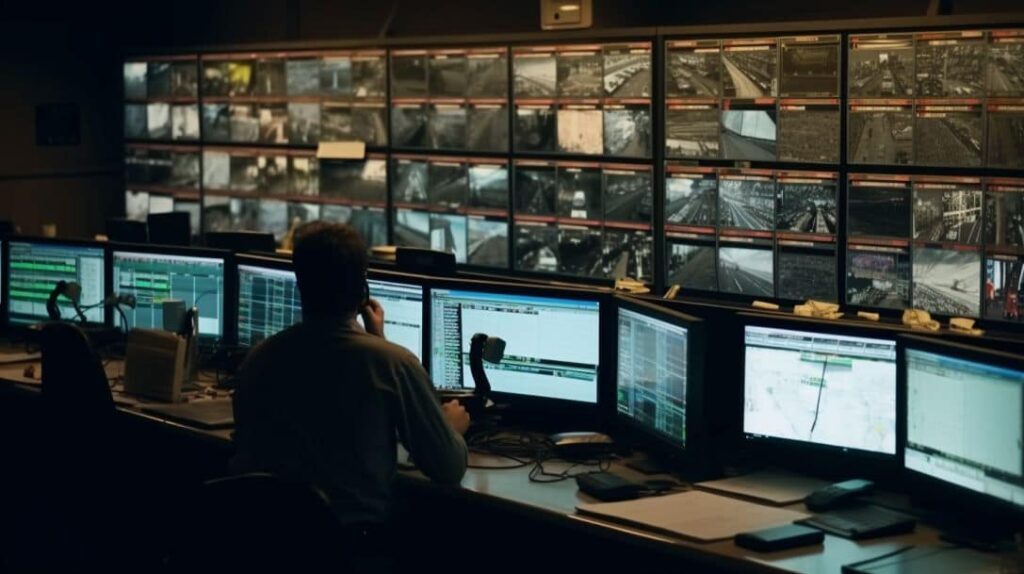
Security cameras have proven to be a significant deterrent for criminals. As crime rates in urban and suburban areas continue, homeowners, as well as businesses are turning to these surveillance systems for protection.
Multiple studies indicate that the visible presence of security cameras can discourage potential offenders. Criminals are often deterred by the prospect of their illicit activities being recorded and used as evidence against them.
The effectiveness of security cameras extends beyond mere deterrence. In cases where crimes do occur, high-quality video footage captured from security camera systems can play a pivotal role in the investigation process.
Law enforcement agencies frequently rely on such footage to identify suspects and understand crime dynamics better.
Moreover, improvements in modern technology now offer advanced features like motion detection and facial recognition with security cameras making it even trickier for perpetrators to go unnoticed.
These additions enhance the performance of standard surveillance systems which contribute significantly towards effective crime prevention measures.
However, several factors influence how efficient these systems would be at preventing crimes – the quality of video footage being paramount among others followed by optimal placement and visibility along with regular maintenance checks necessary to ensure uninterrupted functionality.
Albeit effective tools in deterring criminal activity, it is also essential for users not just only install but learn how best they could utilize this peacekeeping apparatus effectively while maintaining a healthy balance between privacy rights alongside ensuring safety simultaneously.
Studies Showing the Positive Impact of Security Cameras in Deterrence of Crime
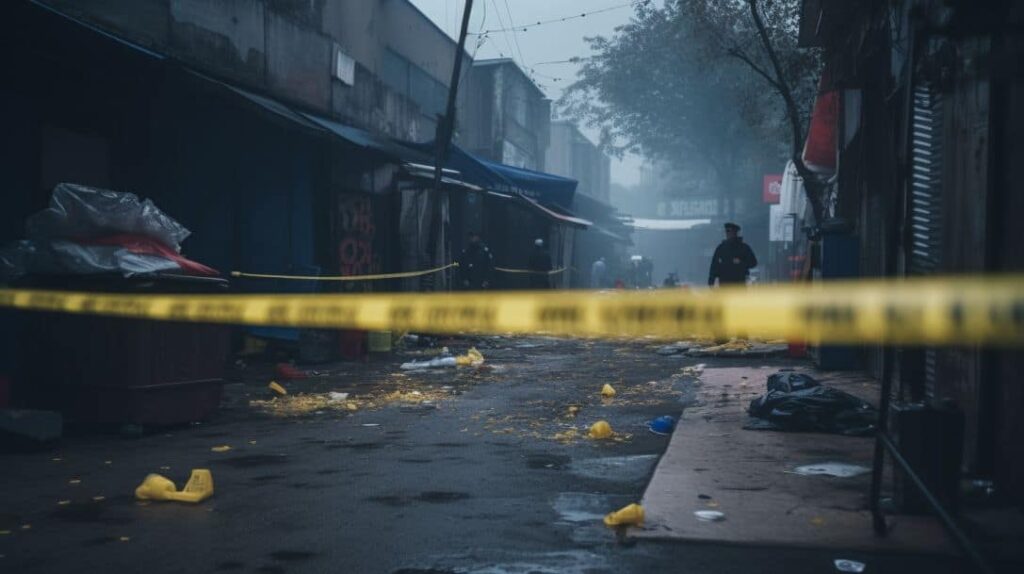
Various studies confirm the effectiveness of security cameras in deterring crime, with significant reductions in property crimes noted and an increased likelihood of perpetrators being apprehended and convicted.
- Most academic studies have found that security cameras reduce and deter crime.
- CCTV cameras are effective in preventing crime in public places such as parking garages.
- Street lighting is shown to be effective in preventing crime when combined with surveillance cameras.
- Cameras are effective as a deterrent for crimes such as car burglaries and property theft.
- Security cameras were found to be the most effective deterrent for criminals when surveyed.
- Surveillance cameras annually deter approximately 575 crimes.
- Approximately 75 crimes are displaced to nearby places due to surveillance cameras.
- The cost of deterring crimes with surveillance cameras is approximately US$.
- A former burglar confirms that home security cameras are effective.
- Statistics and facts prove that security cameras are one of the best ways to deter burglars.
Facts about – Understanding the Effectiveness of Security Cameras in Crime Prevention
- CCTV cameras are effective in deterring crime, especially when paired with other elements.
- More research is needed to fully understand the real effect of cameras on crime reduction.
- The introduction of surveillance cameras in the Stockholm subway system resulted in a reduction in crime.
- The effectiveness of surveillance technology in preventing and solving crimes depends on the resources allocated to it.
- The use of CCTV cameras has been studied in relation to crime reduction, displacement, and public security.
- Security cameras have been found to be effective deterrents for crimes such as burglary, armed robbery, employee theft, and vandalism.
Significant reduction in property crimes
Security cameras play a pivotal role in decreasing property crimes significantly. They act as a visual deterrent, making would-be criminals think twice before committing unlawful acts.
Increased likelihood of apprehension and conviction of perpetrators
Installing a security camera system at your property not only deters criminals but also amplifies the likelihood of catching them if a crime occurs. Here’s how this happens:
- Surveillance cameras record detailed footage that serves as concrete evidence in case of a crime, increasing the chances for burglars to be identified and apprehended.
- Accessible live feeds from surveillance systems provide real-time updates to law enforcement agencies aiding rapid response.
- With advancements in technology, security cameras can now recognize suspicious behaviors and send instant push notifications to homeowners or authorized personnel.
- High-quality video surveillance helps investigators through facial recognition technology, which can match faces against databases of known suspects.
- Criminal activity, unknowingly trapped by the lens of an outdoor camera, leads to breakthroughs in cases that might have otherwise hit a dead end.
- Images captured by CCTVs aid homeowners and business owners in easily reporting incidents with proof for insurance claims or legal actions.
Factors That Influence the Effectiveness of Security Cameras
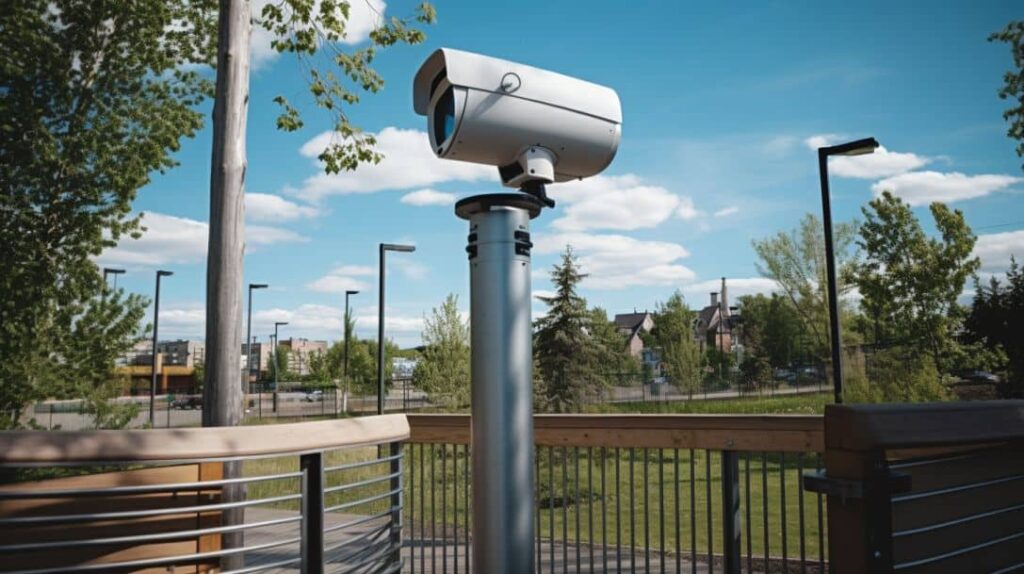
The effectiveness of security cameras in deterring crime is influenced by factors such as the visibility and strategic placement of the cameras, the quality of video footage they capture, and their regular maintenance and monitoring for optimal performance.
Visibility and placement of cameras
Security cameras placed at visible and strategic points tend to be more effective in deterring crime. High-level visibility of a security camera can make potential criminals think twice before committing an act.
The placement, on the other hand, decides whether the camera captures essential action or not. Exterior doors, especially those off-street or hidden by trees or fences, are ideal places for outdoor cameras.
As per studies conducted, offenders often dodge properties boasting openly installed surveillance systems and move towards less-protected targets.
The quality of video footage captured also hugely depends on where your security camera is placed — having cameras set up too high might miss out on crucial details due to the angle of recording whereas installing them very low may result in obstructions blocking the viewfinder.
Proper positioning is crucial for capturing clear images that can help identify burglars or monitor suspicious activities effectively.
Experts suggest placing some dummy or decoy cameras along with real ones to confuse intruders further, making it difficult for them to distinguish between real and fake ones – adding another layer of deterrence effect towards would-be perpetrators.
Remember that while visibility deters some criminals who wish not to be seen – strategic (and sometimes concealed) placement ensures important details aren’t missed when necessary – giving you peace of mind knowing you’re adequately protected.
Quality of video footage
Clear, high-resolution video footage poses a significant deterrent to criminal activity. Grainy or blurred images can limit the effectiveness of security cameras in both crime prevention and subsequent investigations.
With crisp and sharp visuals from your surveillance camera system, potential burglars find themselves at a higher risk of identification and prosecution.
HD resolution, night vision capabilities, and motion detection – these factors play into the quality of video footage provided by a security camera installed in homes or businesses. PTZ (pan-tilt-zoom) and panoramic cameras boast features that elevate the footage’s detail level significantly.
More advanced cameras like these not only deter thieves but also aid law enforcement agencies with precise details during investigations.
Regular maintenance and monitoring
Regular maintenance and monitoring of your security camera systems ensure optimal performance. This entails checking for software updates to keep them running efficiently and inspecting the physical condition of each piece to guarantee their functionality.
Through continuous surveillance, you can immediately detect irregular activities or potential threats, allowing rapid response for maximum safeguarding. The success in deterring crime depends on well-functioning cameras that provide clear images or videos, which is achieved through consistent servicing and scrutiny.
By sustaining a vigilant eye over your environment, whether it be your home or business premises, you solidify your defense against crime.
Controversies Surrounding the Use of Security Cameras
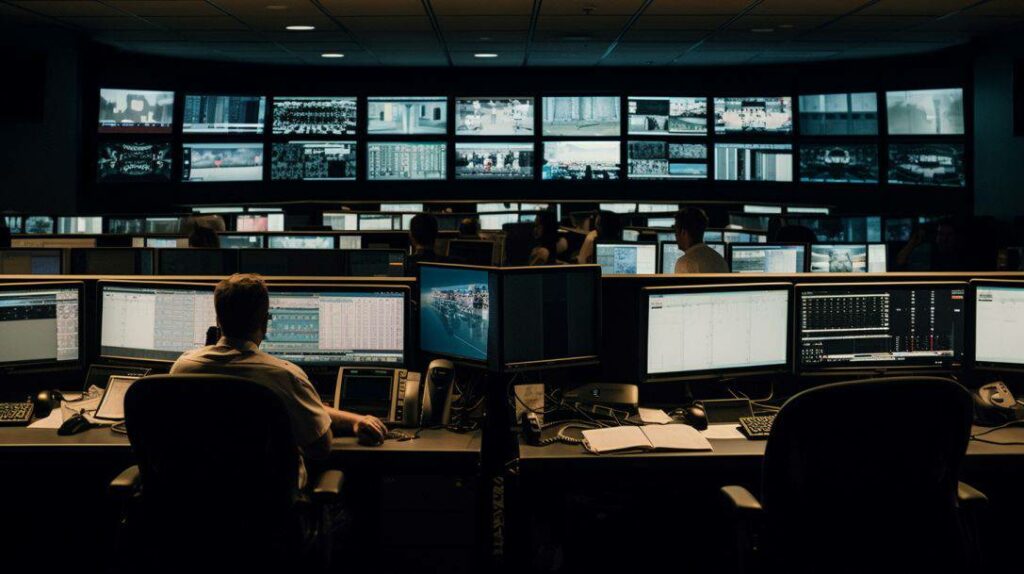
Despite their proven effectiveness in crime deterrence, security cameras also spark debates over privacy invasion and potential misuse. Delve deeper into these pressing controversies to form a balanced view on surveillance technology.
Invasion of privacy
Security cameras can unintentionally invade privacy by capturing more than just criminal activity. Residents or employees may not feel comfortable with constant surveillance, believing that it infringes on their personal space and freedoms.
While the devices aim to deter crime, if misused they carry the potential for unwelcome intrusion—recording private moments or sensitive areas such as bedrooms and bathrooms. However, using advanced technology like artificial intelligence in camera systems offers a solution; these mechanisms can be programmed to overlook specific zones inside a building, mitigating concerns about over-surveillance while still effectively deterring criminals.
The debate of security versus privacy is an ongoing one that encourages responsible use and ethical practices when implementing such pervasive technology in homes or businesses.
Potential for misuse and abuse
Security cameras, while vital for safety, can become tools of misuse and abuse. Unscrupulous individuals or groups may exploit these devices for nefarious purposes. For instance, they could use the footage to stalk or harass people, invading their privacy without any justification.
In work environments or public spaces, unauthorized access to security camera feeds can potentially lead to severe violations of personal privacy. Excessive surveillance might also create an uncomfortable atmosphere of mistrust and fear.
It’s essential that business owners implement proper controls over who has access to their security systems in order to prevent such issues.
The Role of Artificial Intelligence in Enhancing the Effectiveness of Security Cameras
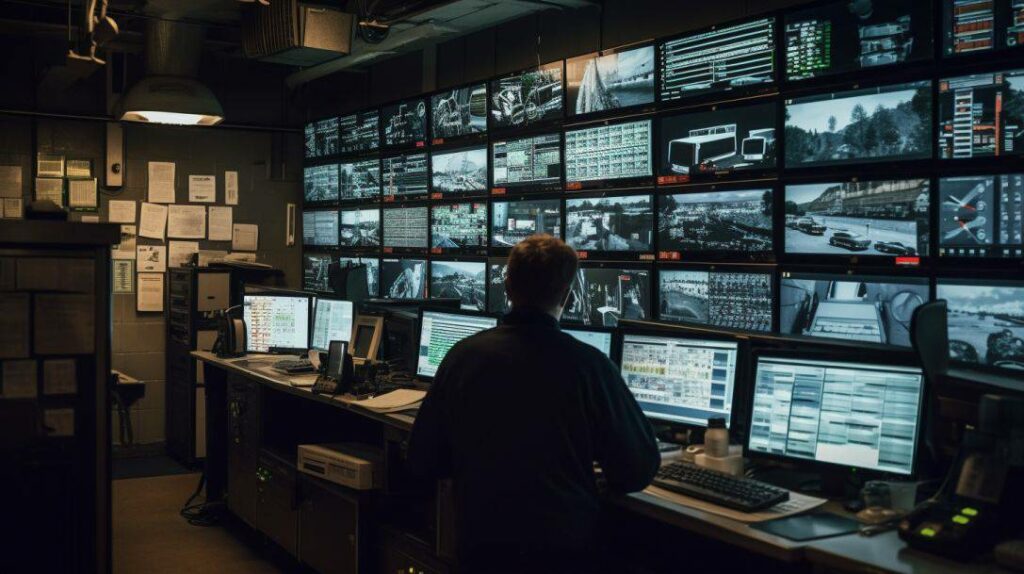
“Artificial Intelligence is revolutionizing security cameras with advanced features like motion detection and facial recognition, making them more effective in deterring crime.” Discover how this sophisticated technology is setting a new standard for home and business surveillance.
Advanced motion detection and tracking
Cutting-edge technology in security cameras now enables advanced motion detection and tracking. This capability allows the camera to identify and monitor movement in its field of view, offering enhanced surveillance coverage.
The artificial intelligence (AI) behind this technology can discern between regular and suspicious activity, providing an extra layer of protection against potential threats. Cloud-connected security cameras utilize smart analytics for identifying moving objects, proving particularly useful in spotting unrecognized persons or vehicles.
Features like these have led to a significant improvement in detecting crimes under progress – making our homes safer than ever before.
Facial recognition technology
Facial recognition technology has rapidly evolved, becoming a highly effective tool in enhancing security camera systems. This innovation allows cameras to precisely identify and discriminate individuals based on unique facial features.
Despite the significant improvements in accuracy, certain limitations persist such as false alarms or unauthorized access due to configuration errors. Moreover, its application by tech companies and law enforcement agencies enables real-time identification further strengthening crime prevention efforts.
However, this advancement brings about a critical concern of mass surveillance, bias, and the potential perpetuation of racial inequality within the criminal justice system. Thus it’s imperative for home and business owners to consider these elements when implementing facial recognition technology into their security strategies.
Real-Life Examples of Security Cameras Detering Crime
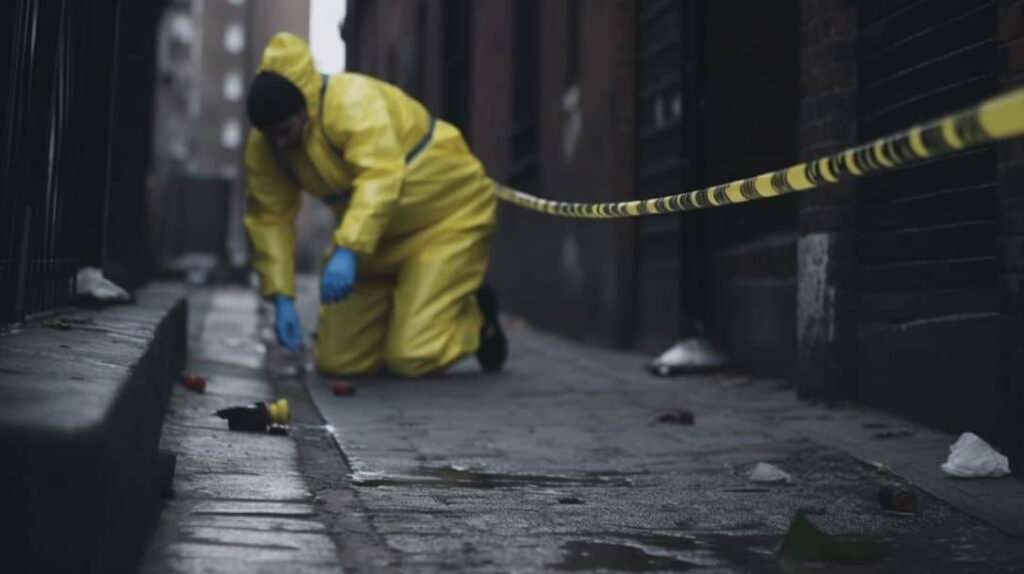
Discover how security cameras have significantly reduced crime rates in areas such as London’s “Ring of Steel” and high-crime neighborhoods in New York City. Dive into these compelling real-world cases that clearly illustrate the impact of surveillance on deterring unlawful activities.
Stay with us to understand more about this fascinating subject.
London’s “Ring of Steel” security camera network
The “Ring of Steel” in London is a formidable security camera network securing the city’s financial district. This system comprises approximately ninety cameras, sophisticated enough to track all passing vehicles and record license plate details.
Established as a reactive measure to a terror incident, it stands as an assertive step towards crime prevention within the city. The network unites various technologies for comprehensive surveillance, making it an influential deterrence tool against potential criminal activities.
Installation of security cameras in a high crime area in New York City
New York City tackled its high crime areas with a strategic installation of security cameras. Police focused on neighborhoods suffering from persistent criminal activities, attributed to the city’s unfortunate reputation.
Their approach featured installing state-of-the-art CCTV systems as part of a comprehensive anti-crime initiative. With top-notch video quality and night vision capabilities, these cameras provided law enforcement with valuable evidence for investigations.
The result was more than promising: a significant reduction in crime rates soon followed this technological intervention, giving both businesses and homeowners added peace of mind about their safety.
Not only did potential criminals think twice before committing offenses, but residents also felt safer knowing that authorities were proactively enhancing security measures for their protection.
Limitations and Criticisms of Studies on Security Camera Deterrence of Crime
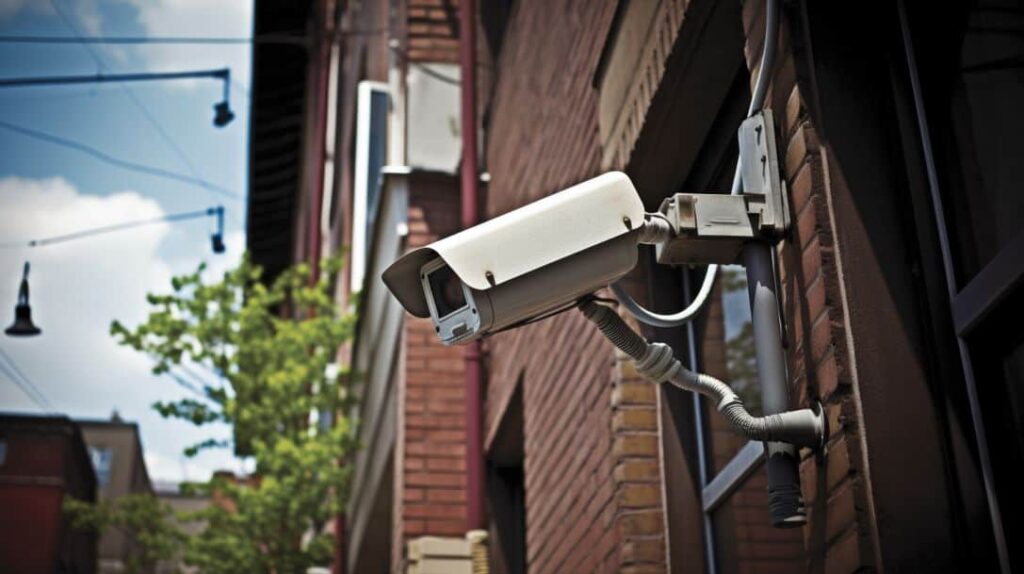
Some experts question the validity of studies on security camera deterrence, citing insufficient long-term data and possible displacement of crime. Is this skepticism warranted? Discover how these critics challenge the perceived effectiveness of surveillance technology in crime prevention.
Lack of long-term data
Many studies on the effectiveness of security cameras in crime deterrence suffer from a major weakness: they lack long-term data. Short-term results often paint an overly positive picture, giving rise to high expectations that may not be sustainable over a more extended period.
While these short-term studies show reductions in crime rates due to surveillance systems, they might not accurately forecast their long-lasting effect. Crimes could initially drop and then return close to previous levels as criminals adapt and find ways around the cameras’ sightlines or coverage areas.
This scenario highlights the need for continuous monitoring and adjustment of camera placement and functionality based on evolving patterns of criminal behavior.
Possible displacement of crime to other areas
Detectives and criminologists have proposed a correlation between the installation of security cameras and an unintentional effect — crime displacement. This theory suggests that criminals may shy away from areas monitored by surveillance equipment, only to seek unprotected locations for carrying out illegal activities.
A well-circulated study indicates this possibility, raising concerns about unintended consequences of heightened security measures. Though some businesses and homeowners report fewer incidents in camera-protected zones, adjacent areas might witness an increase in criminal activities.
Clearly understanding this potential outcome positions people to implement more comprehensive strategies beyond relying solely on CCTV systems for deterring crime.
Balancing Privacy and Security: Best Practices for Using Security Cameras
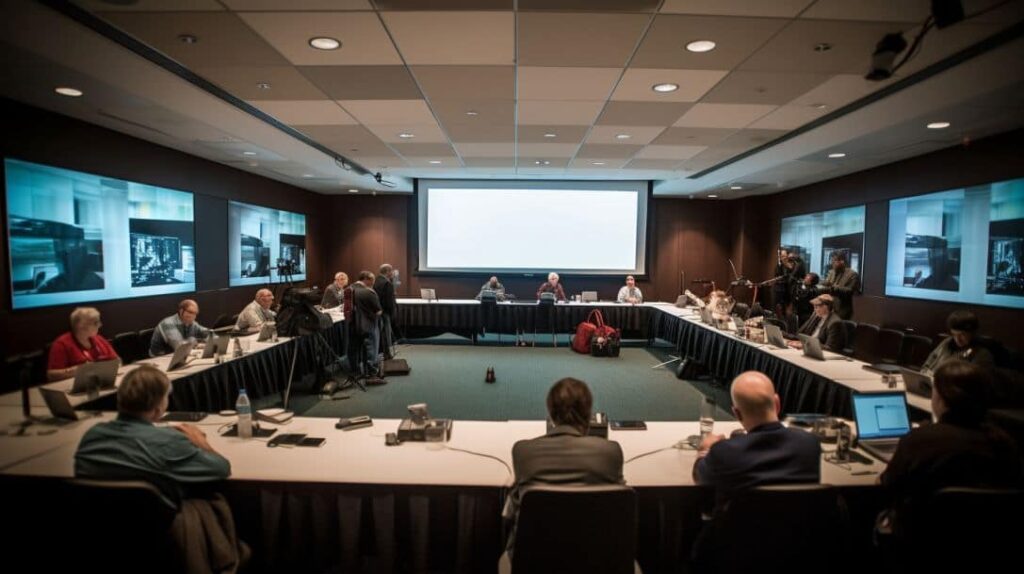
To achieve a balance between safeguarding privacy and enhancing security, it’s essential to adopt best practices such as obtaining consent from people before camera installation and steering clear of high-privacy areas.
Dive deeper into this topic for beneficial insights on the proper use of security cameras.
Obtaining consent from residents and employees
Gathering consent from residents and employees is an integral part of the process when installing security cameras. It’s not just about legality; it’s a matter of respecting personal privacy rights too.
In many states, for example, laws mandate that businesses must inform their employees in writing about any surveillance measures, including hidden or visible cameras. Similarly, landlords are also expected to notify their tenants prior to setting up surveillance devices around residential premises.
Compliance with these regulations can be as simple as displaying visible signage stating the presence of security cameras. Meanwhile, obtaining written employee consent further ensures legitimacy and helps maintain public support for CCTV use.
Avoiding placement in areas of high privacy, such as bathrooms or bedrooms
Security cameras serve as powerful tools in maintaining a secure environment. However, the excessive use of these devices could easily cross boundaries and infringe on personal privacy.
Hidden cameras are not to be placed in locations with higher expectations of privacy such as bathrooms or bedrooms. This is deemed impermissible surveillance, showing disrespect for an individual’s rights and humanity.
There are serious consequences if this trust is breached. Not only can it severely damage reputations, but it may also erode public support for security measures overall. Moreover, failure to respect these private spaces can lead to footage being used indecorously or falling into the wrong hands intentionally.
Thus placing cameras carefully while prioritizing dignity over desire for complete control is fundamental when developing a surveillance strategy.
Conclusion: Security Cameras a Powerful Piece in the Crime Prevention Puzzle
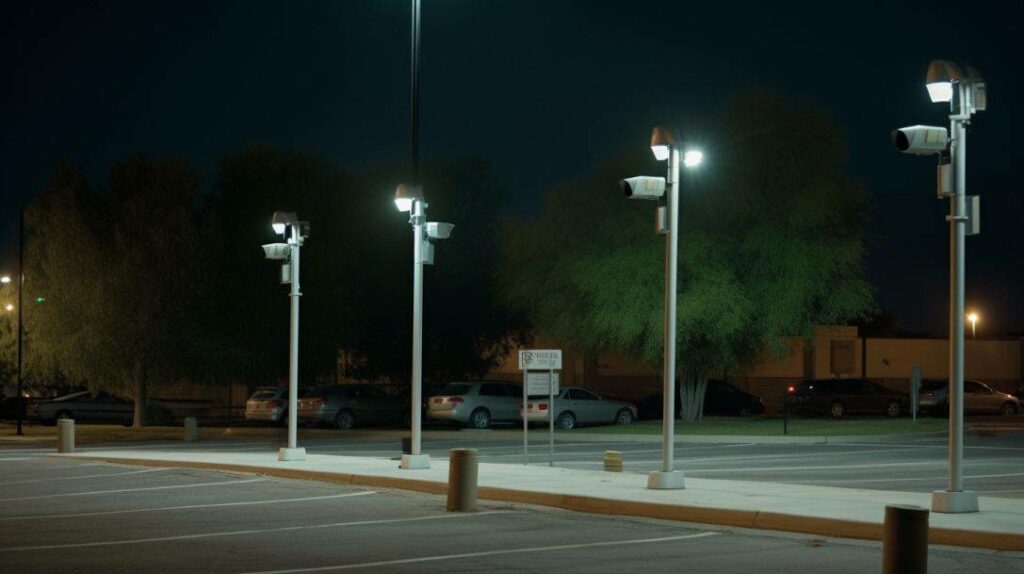
The body of evidence makes a compelling case for security cameras as impactful tools in deterring crime and assisting investigations when offenses do occur. However, these systems deliver optimal results only when all elements come together cohesively.
Procuring high-definition equipment provides the foundation. Strategically positioning cameras to capture facial details and suspicious activities takes things to the next level. Diligent monitoring and rapid response add the human element that brings everything full circle.
Regular maintenance and upgrades are equally vital to keep pace with the ever-evolving nature of criminal behavior. As perpetrators adapt, so must the technology and practices around using surveillance systems. Continuous enhancements prevent complacency and loopholes.
Artificial intelligence injects these systems with even greater potential. Features like motion sensing, object recognition, and facial identification offer around-the-clock automated vigilance. Even with such technological feats, human oversight remains essential to interpret alerts and spearhead appropriate reactions.
Cameras thus represent one powerful piece in the larger puzzle of crime prevention. Their deterrent effects are undeniably valuable but work best when incorporated into comprehensive strategies. As long as fundamental principles around lawful and ethical use are upheld, surveillance systems provide communities with a robust shield against unlawful activities.
In essence, security cameras deliver on their promise to prevent crime when thoughtfully and responsibly implemented. Their capabilities continue to grow in tandem with technological innovations, making our homes, businesses, and public areas safer than ever before.
FAQs
Do security cameras really deter crime?
Studies have shown that visible security cameras can deter crime, especially property crimes. Potential criminals are less likely to act if they know they may be recorded and identified. However, cameras may just displace crime to other areas without cameras.
Where is the best place to install security cameras?
The best spots are areas with high visibility but also good vantage points to capture criminal activity, like entryways or hidden off-street doors. You also want to position cameras to get clear facial images and avoid obstructions. Places with expectations of privacy like bathrooms should be avoided.
What features make security cameras most effective?
High resolution and night vision capabilities allow security cameras to capture clear, detailed footage day and night. Motion detection, facial recognition, and AI analytics also enhance a camera system’s ability to detect and deter suspicious activity.
Do I need to tell people if I install security cameras?
In many places, you are legally required to notify people, like employees or tenants, if you install security cameras, especially hidden ones. Signage and obtaining written consent are best practices for balancing privacy and security concerns.
How often should I maintain my security cameras?
Regular maintenance like software updates and physical inspections are important to keep security cameras functioning optimally. Continuously monitoring the footage also helps you respond quickly to any criminal activity caught on camera.
